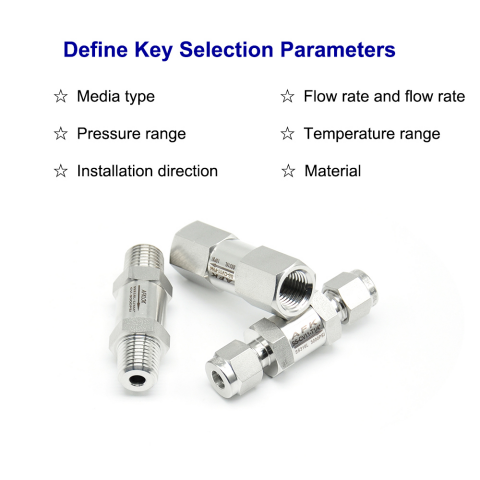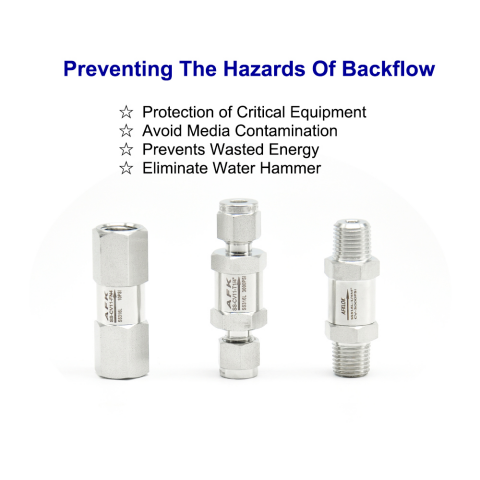Selecting the right check valve for industrial applications requires comprehensive consideration of fluid characteristics, operating conditions, installation requirements and valve performance and other factors. The following are detailed selection steps and considerations:

1. Define the fluid characteristics
Type of medium: liquid, gas, vapour or slurry? Corrosive, viscous or containing particles?
- Corrosive media: selection of corrosion-resistant materials (such as stainless steel 316, Hastelloy, PTFE lining).
- High viscosity or containing particles: preferred spin or ball check valve, avoid disc type (easy to clog).
Temperature and pressure: high temperature and pressure need to choose metal seal (such as spring-assisted lift valve), low temperature and low pressure can be plastic or rubber seal.
2. Key operating parameters
Pressure Rating:
Ensure that the rated pressure of the valve (PN/Class) is ≥ the maximum system pressure, and take into account pressure fluctuations.
High-pressure systems (such as hydraulic systems) need to use forged valve body.
Temperature range:
Sealing materials need to match the temperature (e.g. NBR rubber for -30°C ~ 80°C, PTFE for -200°C ~ 260°C).
Flow requirements (Cv value):
Calculate the required Cv value to avoid excessive valve pressure drop affecting system efficiency.

3. Material selection
Valve body material:
Carbon steel (economic, suitable for non-corrosive media).
Stainless steel 304/316 (general corrosion resistance).
Special alloy (such as titanium, monel, for strong acid and alkali environment).
Sealing materials:
EPDN (water and steam resistant), FKM (oil resistant), PTFE (chemical resistant).
4. Installation and maintenance
Installation direction:
Lift type valves must be installed in the direction of the arrow, swing type needs to be installed horizontally.
Space limitation:
Compact space select butt-clamp type or short structure valve (such as disc type).
Maintenance Convenience:
Split design for easy cleaning (e.g. food/pharmaceutical industry).
Post time: Apr-07-2025